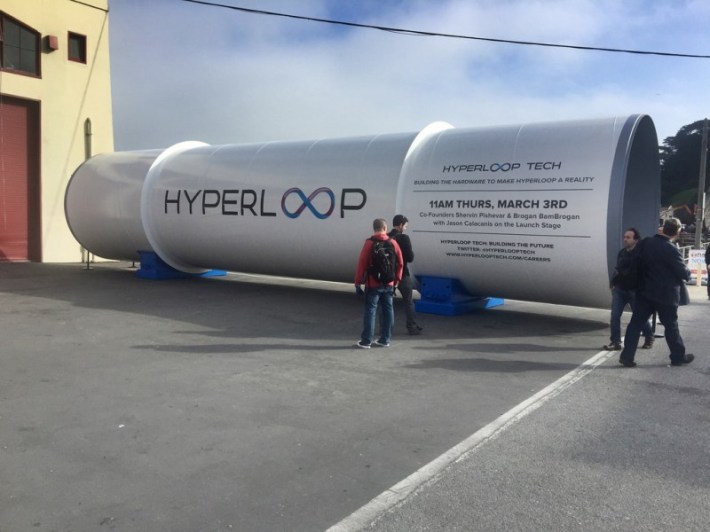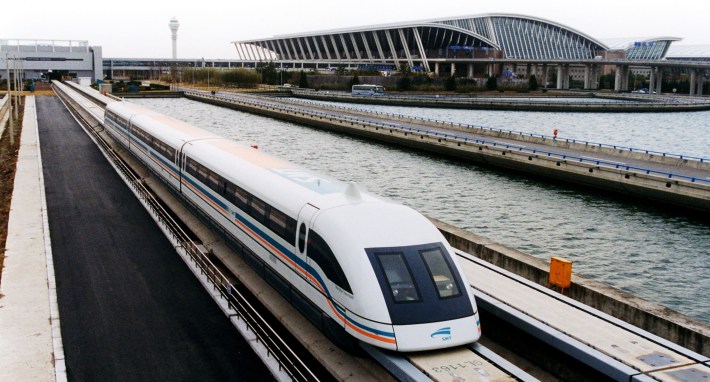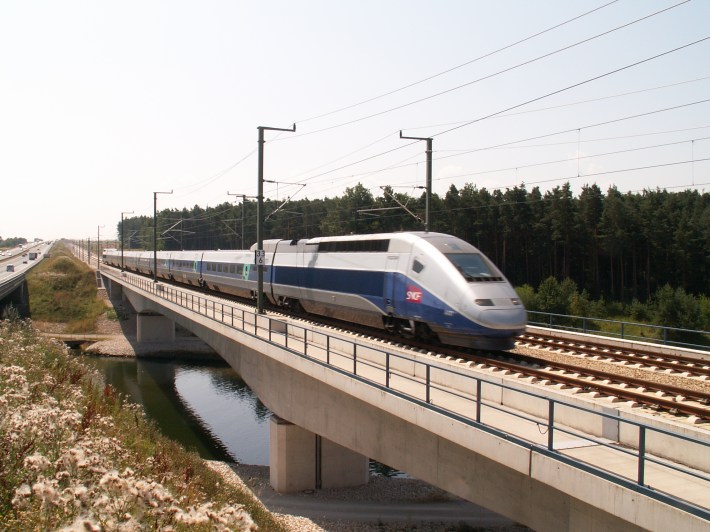News broke over the weekend that Virgin Hyperloop has let almost half of its staff go, making over 100 employees redundant.
From Fortune magazine's coverage:
...hyperloops—which propose propelling passengers down a vacuum-sealed tube in pods at speeds reaching 670 miles per hour—were struggling to gain traction long before COVID. Virgin Hyperloop has intrigued only one potential client, Saudi Arabia, since its inception in 2014, while rival hyperloop ventures have already given up.
The company is ostensibly turning from passenger goals to freight. But Streetsblog has to ask: what exactly is the market for 700 mph ground freight? Meanwhile, the North Central Texas Council of Governments has also abandoned "hyperloop" as a possibility for its high-speed rail (HSR) corridor plans.
As Streetsblog has covered since this "technology" was introduced via a white-paper by billionaire entrepreneur Elon Musk in 2013, hyperloop has confused policy makers, some who have suggested this vaporware tech is a viable alternative to conventional rail projects, notably California High-Speed Rail. Musk, obviously, has done amazing and truly revolutionary things with rockets and electric cars. But reporters--and apparently many investors--failed to look at the details of what he was actually proposing for the hyperloop. For one, it's not actually a new idea; sending super-fast sleds through depressurized tubes was proposed by Robert Goddard in 1904 (there were even older versions).
Moreover, NASA engineers did the math on Musk's original proposal and concluded his idea for levitating the train with air simply wouldn't work.

Thus, the concept Musk originally proposed morphed into a train levitating on banks of magnets embedded in a guideway. This is also not a new idea. The Chinese opened the world's first commercial, high-speed "MagLev" train between a station on the outskirts of Shanghai and Pudong International Airport in 2002. It hits around 270 mph. And the Japanese are building one between Tokyo and Nagoya to compliment their crowded and almost overly successful, 200-mph, conventional steel-wheel-on-steel-rail bullet trains.

The trouble is MagLev guideways are extremely expensive--something like twice the cost per-mile of conventional steel-wheel-on-steel-rail HSR, depending how one breaks down the numbers. That's why Germany, which pioneered the technology, has abandoned MagLev. Hyperloop developers will have to contend with an all-but prohibitively expensive magnetic track combined with the unknown but fearsome costs of enclosing the entire guideway and trains inside a giant air-tight tube--and then building a system to evacuate the atmosphere from the tube. It also means building stations with space-station-like air locks.
Yes, it's possible to do all this. And with wheel friction and aerodynamic drag eliminated, a MagLev can hit nearly 700 mph, at least in theory.

But any cost-versus-benefit analysis of running MagLev trains inside depressurized tubes makes it clear why "vactrains" have been relegated to science fiction and magazines such as Popular Mechanics since the 1950s.

The simple fact is George Stephenson and other railroad pioneers came up with a very efficient, low-friction way to move large numbers of people and massive amounts of freight in the 19th Century: steel-wheeled trains on steel-railed tracks. Today, electrified, HSR trains in Europe and Asia commonly run at 200 mph. HSR trains have tested at near 360 mph, so there's still decades of evolutionary speed improvements to be made as more efficiencies are figured out.
There really isn't anything in development that better serves markets such as Tokyo-Osaka, London-Paris, Boston-New York-Washington, Los Angeles-San Francisco, or dozens of other large city-pairs between 200 and 500 miles apart (and even better if there are smaller cities in-between). And the sooner naive politicians in California and the rest of the U.S. stop getting distracted by magic vac-trains, monorails, battery-powered HSR, and other vaporware alternatives, the better.






